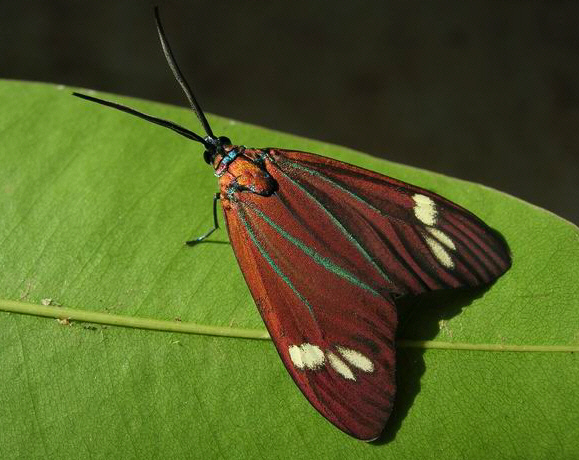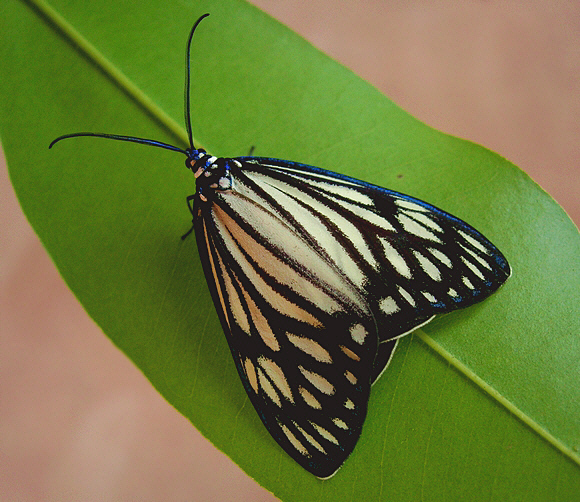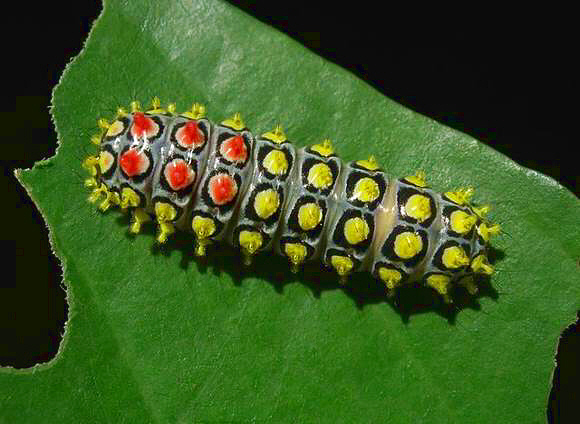
Introduction
In Europe and North America the moth family Zygaenidae is best known for the colourful day-flying Burnets of the subfamily Zygaeninae, and the metallic green Forester moths of the Procridinae. In the tropics a further 5 subfamilies occur, including the Chalcosiinae, which has representatives distributed across the Indo-Australian region from Pakistan to the Philippines, and south via the Malay peninsula to Sumatra, Borneo, Sulawesi, Java and New Guinea. The genus Cyclosia comprises of about 100 species. Cyclosia papilionaris is distributed from Thailand to south China.
Habitats
This species is found in rainforest and humid deciduous forest at altitudes between sea level and about 1000m.
Lifecycle
The larval foodplant of Cyclosia papilionaris is Aporusa dioica ( Euphorbiaceae ). The larva illustrated below has been parasitised by an entomopathogenic nematode worm. When the worm was a minute juvenile it was probably unintentionally ingested by the caterpillar as it browsed on leaves. After entering the body of the caterpillar, the nematode, over a period of several days fed internally on the body tissues of the caterpillar. Once the nematode became fully grown it burrowed it’s way out of the caterpillar, which slowly shrivelled and died. The cycle is completed when the nematode drops to the ground and reproduces in the soil. A new generation of tiny juvenile nematodes then slithers up onto a leaf to await the arrival of another caterpillar.
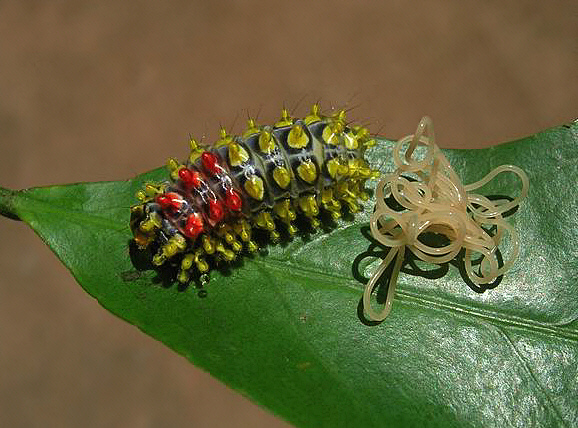
The pupa is formed within a cocoon, attached to the upper surface of a leaf.
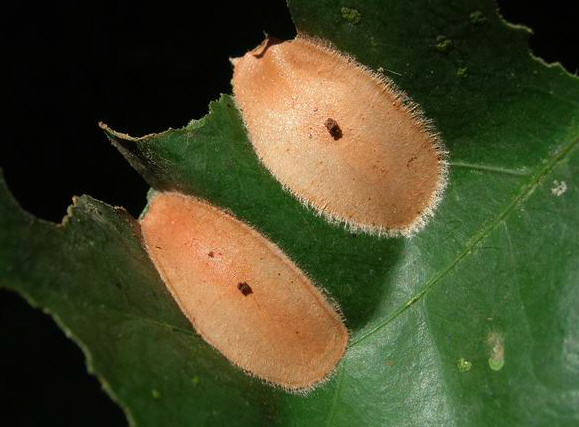
Adult
This is a day-flying species. Both sexes are illustrated below.
